An airman receives assistance from a teammate while entering a safety vessel during rescue hoist training near Hurlburt Field, Fla., Sept. 2, 2020.
Providing up-to-date information, news and original content on American Military issues.
An airman receives assistance from a teammate while entering a safety vessel during rescue hoist training near Hurlburt Field, Fla., Sept. 2, 2020.
Army Spc. Catherine Downes moves through an obstacle during the 2020 U.S. Army Reserve Best Warrior Competition at Fort McCoy, Wis., Sept. 5, 2020.
Marines fast-rope from an MH-60S Seahawk helicopter during a visit, board, search and seizure exercise aboard the USS Germantown in the South China Sea, Sept. 6, 2020.
Army Spc. Kris-Anne Basilio shows a motorist a vial before issuing a COVID-19 test in Oahu, Hawaii, Sept. 3, 2020.
Navy Petty Officers 1st Class Alan Ranks and Krystal Peterson take the temperatures of other sailors preparing to take an exam in Misawa, Japan, Sept. 3, 2020, as part of COVID-19 response efforts.
A soldier deploys pyrotechnic flares to illuminate an area during an M4 night fire range event as part of the 2020 Army Reserve Best Warrior Competition at Fort McCoy, Wis., Sept. 7, 2020.
Sept. 10, 2020 | BY C. Todd Lopez , DOD News
While it's true the Defense Security Cooperation Agency is most-closely associated with foreign military sales, that is not all they do. When it comes to working with security partners, there's an effort now to focus on multi-domain operations to improve teamwork in regards to air operations, Heidi H. Grant, DSCA's new director said.
"To effectively build a partnership and team in air operations, we work with our allies to bring them into a multi-domain environment," Grant said, during a conversation at the Defense News Conference today. "In this era of renewed great power competition, our adversaries will not be operating in singular land, air or sea domains. They will be operating in multi-domain environments to include cyber and space."
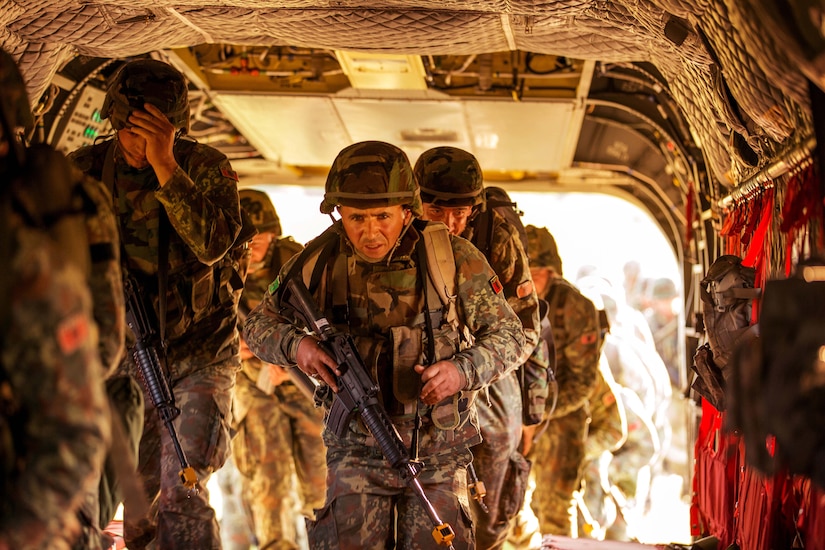
Operationalizing a multi-domain approach, she said, allows for more effective air-power teaming, for instance.
"One of the challenges is to get our partners to look beyond what I call the 'bright and shiny aircraft' to the added necessity to connect and develop a net-centric capability, which will ... make it more effective," she said.
To further push the multi-domain approach, Grant said the DSCA team works actively with geographic combatant commands, military departments and the U.S. defense industry to ensure defense sales are more holistic. She also said the agency monitors international competitions to create further opportunities to expand the use of U.S. platforms with allies and partners.
"Currently, we're monitoring 48 international competitions with 24 partners," she said. "Of those, 70% are air-power based and primarily rotary wing and fighter jets."
Grant also said that DSCA is working to ensure that the exportability of U.S. capabilities is built-in to both programs of record and non-programs of record so that defense partners can have access to the capabilities they need more quickly.
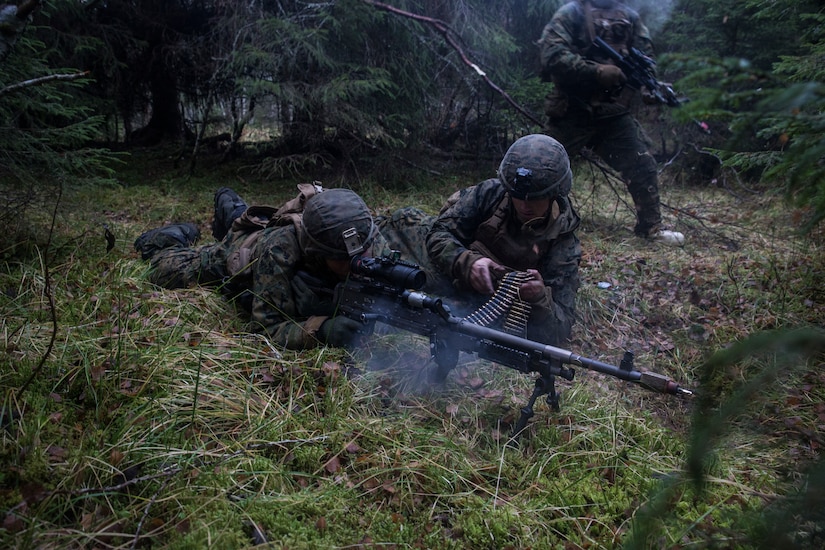
"We're doing our best to lean forward with new emerging technologies to ensure we have a determination on release in advance of actual system deployment by the U.S. military forces," she said.
While it makes sense that U.S.-developed capabilities would be fielded to the U.S. military first, she said partners have said that more could be done earlier in consideration that they also might want access to those capabilities.
"I think this has been one of the complaints of FMS ... we think about the U.S. first, and we don't think about our allies and partners in advance," she said.
Now, she said, there's significant effort across the U.S. government and within industry to consider the exportability of U.S. military hardware early on in its development so that it will be easier to share that technology with partners. That way, partners will consider U.S. technology first — and the compatibility that comes with it — rather than looking elsewhere.
"I think it's ... important to recognize the market is becoming increasingly competitive overall," she said. "Allies and partners don't want to wait to procure the most advanced technology."
Grant has been on board as director of the DSCA, an agency with a civilian and military workforce of about 20,000 personnel, for just over four weeks now.
As the new director, she said she plans on implementing a "partner culture" within the agency to better serve stakeholders.
"This is something that's been important to me in the last couple of ... leadership roles that I've held, this 'partner culture,' and it fits very nicely here in the organization. It's what I value," she said, during an earlier telephonic conference Sept. 9.
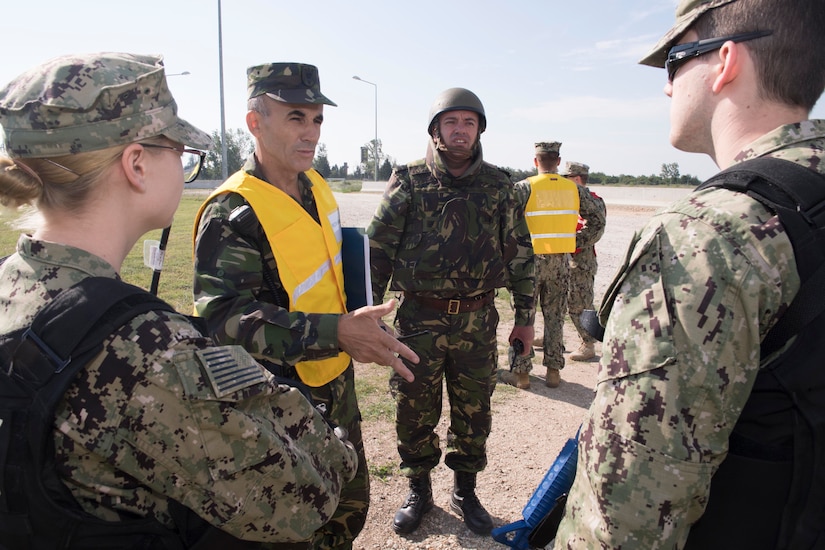
Grant used the word "partner" as a mnemonic device to spell out the priorities she thinks will enhance the partner culture she hopes will grow within DSCA.
"I want the agency to be proactive, in how we do business — proactive in identifying what our stakeholders need so that we can develop policies and plans to ensure they're successful," she said.
The DSCA will also remain accountable to stakeholders, including Congress, she said.
"I can tell you my predecessors have done a tremendous job in reforming our processes to streamline how we do business. And I want to build on that success and will hold the organization accountable for achieving the tangible results," Grant said.
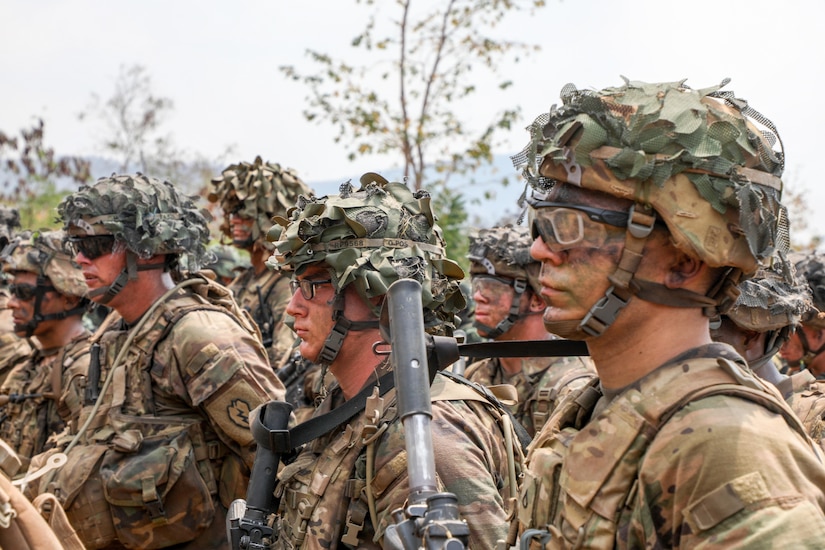
Agency work will also be conducted with respect, she said. With a diverse array of stakeholders, including the defense industry, foreign partners and agencies within the U.S. government, there are bound to be disagreements on how to proceed with agency work.
"What we'll do is navigate our work, leading a diverse stakeholder group, with respect for each other's organizations, equities and responsibilities," she said. "I really believe in order to make progress, we really need to roll up our sleeves and understand each other."
As with nearly every government agency, transparency is also a key facet of Grant's partner culture, she said.
"I want to make sure our stakeholders understand the context associated with process improvement, policy development or funds management and have the opportunity to contribute and provide feedback," she said.
The National Defense Strategy has called for building new partnerships and alliances and strengthening existing ones — DSCA is a key part of that. But as the Defense Department and the DSCA make greater pushes into areas like space and cyber, Grant said, the DSCA itself will need to grow its network of stakeholders — that's the 'n' in partner — to be successful.
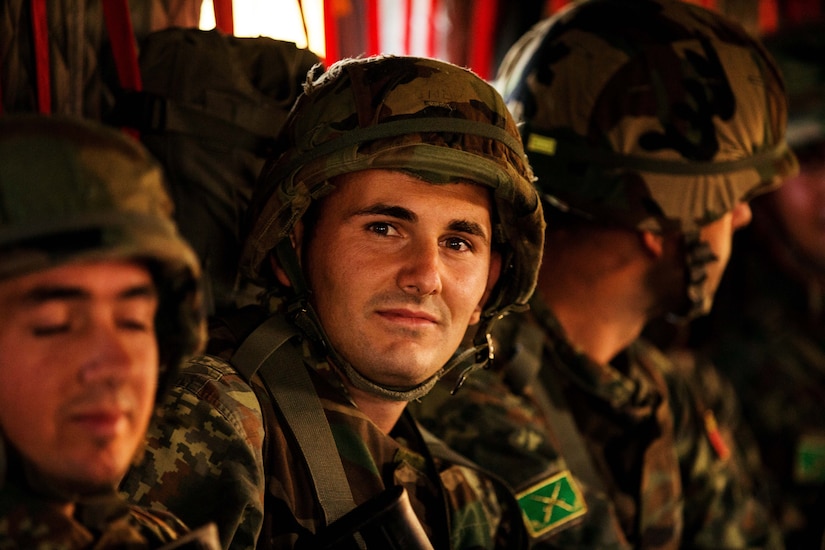
"The importance of this mission has grown, and it will only continue to grow and expand into new mission areas," she said. "As the opportunities increase, we'll continue to build our network of stakeholders who will contribute to our success."
Grant also said that there's significant talent within the 20,000 personnel inside DSCA, and that agency success will require empowering those individuals to work closely with foreign governments and industry counterparts to advance agency efforts.
Finally, she said, DSCA's work must always represent the values of the United States and its people.
Sept. 10, 2020 | BY DAVID VERGUN , DOD News
Defense Department officials spoke about the DOD's modernization strategy, including the development and procurement of high priority systems — such as artificial intelligence, directed energy, small satellites, hypersonics, a 5G network and unmanned aerial systems — which could potentially offer game-changing results on the battlefield.
Dr. Mark J. Lewis, the acting deputy undersecretary of defense for research and engineering, and Michael Brown, the director of the Defense Innovation Unit, spoke today at the Defense News Conference.
Lewis noted that Congress has been very supportive with the direction of the DOD's research and engineering work.
One of the important reasons for this support on the Hill, Lewis said, is that the DOD has demonstrated that it has adopted an approach to "accepting risk intelligently." That means supporting research and engineering efforts that either result in success or in some measure of success, such that even if an experiment fails, some learning about the physics and process results in enlightenment for the successful creation of a future capability.
The types of failures that the DOD wants to avoid are "dumb failures," such as a fin falling off a rocket or use of a wrong type of battery, said Lewis, who is also the director of defense research and engineering for modernization.
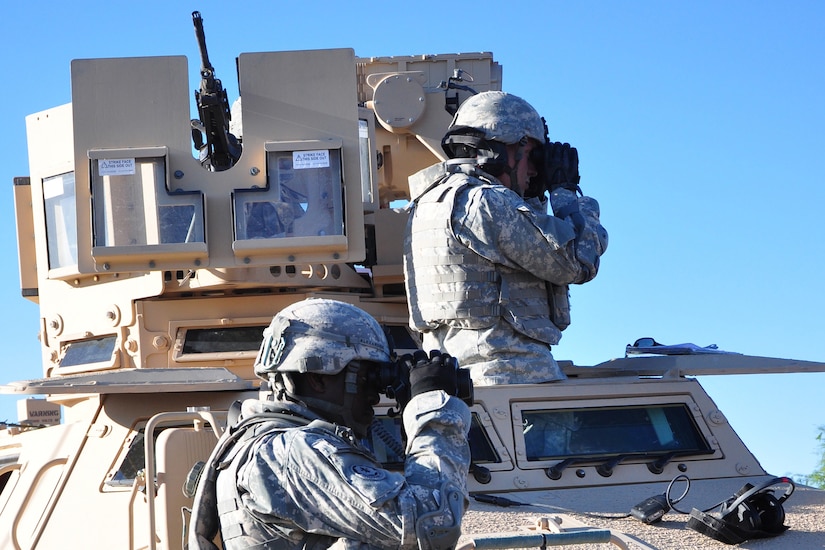
A second strategy of the department, Lewis said, is ensuring each of the services and DOD organizations — including the Defense Advanced Research Projects Agency — are researching and developing systems that are complementary across the department and are not duplicative.
A third strategy, Lewis said, is working with industry and academia on important research or technologies that could benefit the warfighter.
The other portion of this strategy is working with allies and partners across the globe, even those that are less traditional partners. This benefits the department because it gets a variety of perspectives and viewpoints, he said, adding that all 11 of DOD's top modernization priorities involve working with allies and partners.
The department's modernization priorities are rapidly developing, Lewis said. "The most important thing is that we're moving beyond the research lab. We're moving beyond the development phase. We're really moving to actual procurement."
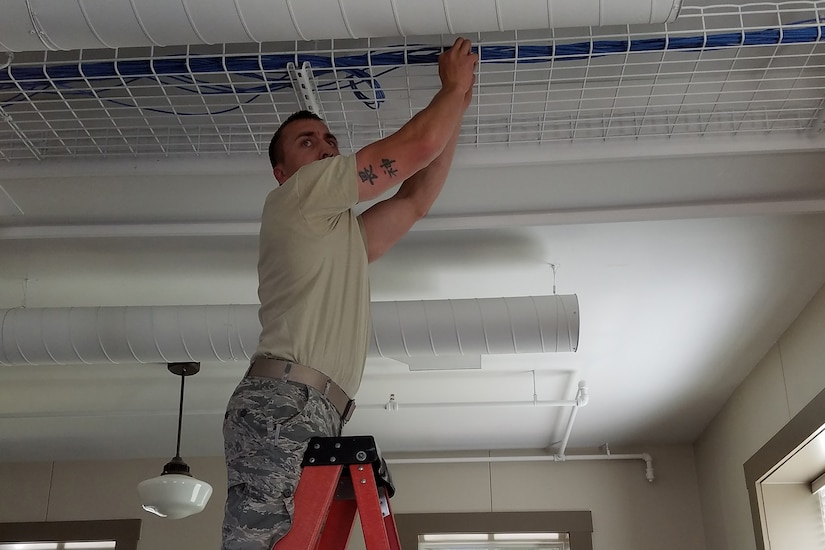
Some examples Lewis cited are:
In addition, Brown provided the following examples:
With backpacks hanging from their shoulders and masks secured to their faces, hundreds of students flooded into post schools on Fort Campbell, Kentucky, for their first day back.
''It's good to get out of the house and see people,'' said Isabella Espinoza, 12, as she waited to enter Mahaffey Middle School.
On the morning of Aug. 24, students and parents arrived at schools across the installation for the first time since March, when they were closed to prevent the spread of COVID-19. For many, it was a different experience than in the past as school staff enforced guidelines established by the Centers for Disease Control and Prevention and the Department of Defense Education Activity.

Much planning and teamwork came together to get ready for post schools to reopen amid the COVID-19 pandemic, said Linda Haberman, principal of Mahaffey Middle School.
''A lot of forethought went into this because when you think about health and safety for large numbers of students, you certainly take that personally – you want to make sure you have done everything you could to make sure all of your children and your staff are safe,'' Haberman said.
Isabella was one of about 385 students who returned to Mahaffey in person for the start of the new school year. The school serves around 520 students, but some opted for a semester of virtual learning from home, Haberman said.
''This first day, we really wanted to do a lot of building community, building culture, making them feel good about being back in school, reducing any stress they might feel and really work on building that communication, community and of course, health and safety,'' she said.
Army Lt. Col. Brian Freidline, deputy commander for administration at Blanchfield Army Community Hospital, and wife, Missy, waited for school to start with their 14-year-old daughter, Anna, outside Mahaffey.
''School is important,'' Freidline said. ''You're always excited for her to start a new year with new teachers and new friends. She'll be learning new things and there will be new opportunities. And it gets everyone back on schedule.''
At Barkley Elementary School, Heather Pappas helped her 5-year-old daughter, Lily, with her rainbow mask. Pappas could not walk Lily to her classroom and greet her teacher as she would have in years past, but Lily didn't seem to mind.
''I'm 100 miles excited,'' Lily said.
Pappas was a little more nervous. Lily, who has four siblings, is the only one old enough to attend school.
''I never thought her first day of school would be in a mask,'' Pappas said. ''I'm nervous, but excited because she's my oldest.''
Kayla Lucas pushed a stroller with her infant while standing in line outside Barkley, while her daughter, Ava, 6, wore a face mask with Disney's ''Frozen'' characters that matched her backpack. She looked around for any friends while waiting to enter the school.
''I'm anxious but excited,'' Lucas said. ''You're excited for her to start, but you don’t really know what to expect with [COVID-19].''
Barkley Elementary School Principal Jenaya Parris said parents are not allowed inside the building to limit the number of people inside and practice social distancing.
Parris greeted students at the door that morning. About 369 were signed up for in-person school and about 120 enrolled in virtual learning, she said.
Parris said the morning went smoothly.
''The kindergarten especially welcomed their students in our gym, where they were able to social distance, make eye contact and start right from the beginning of the day, making students feel welcome and as they belong,'' she said. ''And knock on wood, we didn't even have any tears, so it was good.''
Teresa Moss, Barkley Elementary School guidance counselor, started the first day with drop-off duty. She wore a face shield and held a stop sign as she directed parents to pull their cars forward outside the entrance to let their children out.
Moss said she feels great to be back on campus.

''It's a little different, but it's good to see the kids,'' she said. ''I'm here to help those kids let that anxiety bubble float away.''
Fort Campbell High School Principal Thomas Whittle said the first day back was filled with excitement, learning and safety precautions.
''It's gone quite well, so far,'' Whittle said. ''We have had no issues with masks or students following the rules. There was not one issue with students not wearing a mask. The majority of our students did return.''
Parents also cooperated and there were no problems with car drop- offs or buses, he added.
''They followed the new routine, and if they didn't know they asked,'' Whittle said.
Teachers and staff also were in high spirits to be returning to a routine, he added.
''The faculty was happy to see the kids,'' Whittle said. ''They were happy to see that students wanted to be in school and had a desire to learn. It was quite exciting for people to get back to something close to normal.''
Staff will provide academic and emotional support to help students ''make sense of the new normal,'' he said.
(Stephanie Ingersoll is assigned to Fort Campbell).
Sept. 10, 2020 | BY C. Todd Lopez , DOD News
Recently, during a closed-discussion facilitated by the African Center for Strategic Studies in Washington, D.C, U.S. defense officials joined African, European and U.S. scholars to discuss China's involvement in the world's second-largest continent. One takeaway was that China's investments and involvement there can be beneficial and welcome — so long as China plays by established global norms.
"The expectation is that China will be in Africa for a long time — and that's OK," said Chad L. Sbragia, the U.S. Deputy Assistant Secretary of Defense for China. But, Sbragia explained, the U.S. and African partners want China to conduct itself fairly.
"The expectations are that when the United States or China engages in Africa, it's done so in accordance with the practices that we all hold, including African nations, most dearly," Sbragia said. "That's with transparency and an understanding of meeting international standards."
Transparency, Sbragia said, means being open and honest about how and why activities are being conducted and also fully publicizing what's being done.
"There's a lot of issues that revolve around debt, loan transfers, investments that are made, monies that are paid out," he said. "Those should all be done in the most illuminated way possible."
That straightforward approach, Sbragia said, is something the U.S. brings to the table during its negotiations with partners, both in Africa and elsewhere.
"That's part of what I think our greatest contribution is from the United States, is to showcase and help underscore the best practices of the international system," Sbragia said. "We help screen foreign investments, ensure that all those are done with high quality, that they'll support long-term development in support of Africans' interests and don't undermine the sovereignty of those nations or the global system that we are all stakeholders in."
Ronald W. Meyers, acting Deputy Assistant Secretary of Defense for African Affairs, added that African nations face an array of challenges, so it should not be surprising that they are seeking to diversify their partnerships. "On the security front, they want partnerships to address local concerns over insecurity from violent extremist organizations (VEOs) and foreign intrusion into sovereign spaces, such as in the maritime space, among other priorities," Meyers said. "These are areas where we share common concerns, already work closely together, and have a vested interest in seeing international rules obeyed." The Department's security cooperation efforts are one way we advance mutual interests.
"U.S. Africa Command oversees many of these efforts for the Department under the valuable stewardship of General Stephen Townsend and his team" Meyers noted. The United States offers its partners in Africa quality training and equipment, with an emphasis on support that increases the accountability and resiliency of African defense institutions. U.S. assistance works towards long-term stability — as our training is often multi-year and requires consistent U.S. investment – a reflection of the U.S. enduring commitment to our partners, Meyers explained.
Meyers stated the U.S. has mutually-beneficial partnerships on the continent today and, in some cases, those relationships date back more than 60 years. "African nations are global security exporters," he said. "They are the biggest contributor to peacekeeping missions in the world. They are trying to do things their way. And they're committing their own personnel to address our shared mutual interests."
African nations play an important role in international politics and in the global economy. With a booming youth population, rapidly expanding markets, and occupying the biggest United Nations voting bloc, many experts predict that African voices will only grow louder going forward — and the U.S. is ready to listen. Meyers said, "We want to work more with African nations on issues relating to global security. We want to know how we can better work together to jointly see stability not just in Africa. We have a lot to learn from each other."
With 54 nations on the African continent, there are opportunities to strengthen and grow U.S. security partnerships there, said the acting Undersecretary of Defense for Policy, James H. Anderson, who's also Sbragia and Meyers' boss.
"As China makes potential useful contributions in peacekeeping and anti-piracy, it is important that we look closely to understand which contributions truly advance African interests, and which mask harmful intentions," said Anderson.
"China has expanded its global military presence as a means of protecting investments and exerting economic leverage over host countries. Notably, China is seeking to build overseas logistics and basing infrastructure beyond the People"s Liberation Army (PLA) base it established in Djibouti in 2017," Anderson elaborated.
Both Meyers and Sbragia say that African partners have said they don't want to have to choose between the U.S. and China – but they have already made a choice about the world they want to be a part of.
"You hear this from some countries, not just in Africa, which is, don't make us [choose] choice between China or the United States," Sbragia said. "But when they talk about the choices they have already made, it's clear they support the same type of system the U.S. advocates for — a system built on good governance. We all have a stake in the system the way it is, not in the one that the Chinese are trying to impose upon us."
Sept. 10, 2020
Secretary of Defense Mark T. Esper and Chairman of the Joint Chiefs of Staff Army Gen. Mark A. Milley will conduct a live virtual observance ceremony Friday, Sept. 11, 2020, at the National 9/11 Pentagon Memorial in honor of the 184 people killed in the 2001 terrorist attack on the Pentagon. The Pentagon observance ceremony is not open to the public. The ceremony will be livestreamed on defense.gov.
Due to DOD Health Protection Condition Bravo restrictions during the COVID-19 pandemic, press coverage will be limited in numbers. For TV/video, this is a pool event and only the pool video cameras will be allowed in the memorial.
The first press event will be at the main press station in the 9/11 Memorial at sunrise (6:47 a.m. EDT) just prior to the main ceremony's start. At that time, the American Flag will be unfurled down the side of the Pentagon. Press coverage of the flag unfurling ceremony is limited to 12 press -- not including the network pool camera crew – who must be on the credentialed list. Slots will be filled on a first-come basis, but only one per outlet. Show time for press interested in covering the flag unfurling is 5:30 a.m. Additional details regarding security screening, parking, etc., will be provided to those on the credentialed list.
Press coverage of the main observance ceremony is limited to nine press -- not including the network pool camera crew – who must be on the credentialed list. Slots will be filled on a first-come basis, but only one per outlet. Show time for press interested in covering the main observance ceremony is 7:30 a.m. Additional details regarding security screening, parking, etc., will be provided to those on the credentialed list.
Media interested in covering this event must RSVP by 4 p.m. EDT today, Thursday, Sept. 10, with name, outlet, position, email and phone number by contacting Sue Gough at susan.l.gough.civ@mail.mil. Please indicate whether you want to cover the flag unfurling or the main observance ceremony, or both. Ms. Gough will notify those who are on the credentialed list.
Families will not be present at the observance ceremony; they will be visiting the memorial in small groups throughout the day. Press coverage of family visits is not permitted. Please note that the National 9/11 Pentagon Memorial remains closed to the public; no press will be allowed on the memorial outside of the ceremony events.